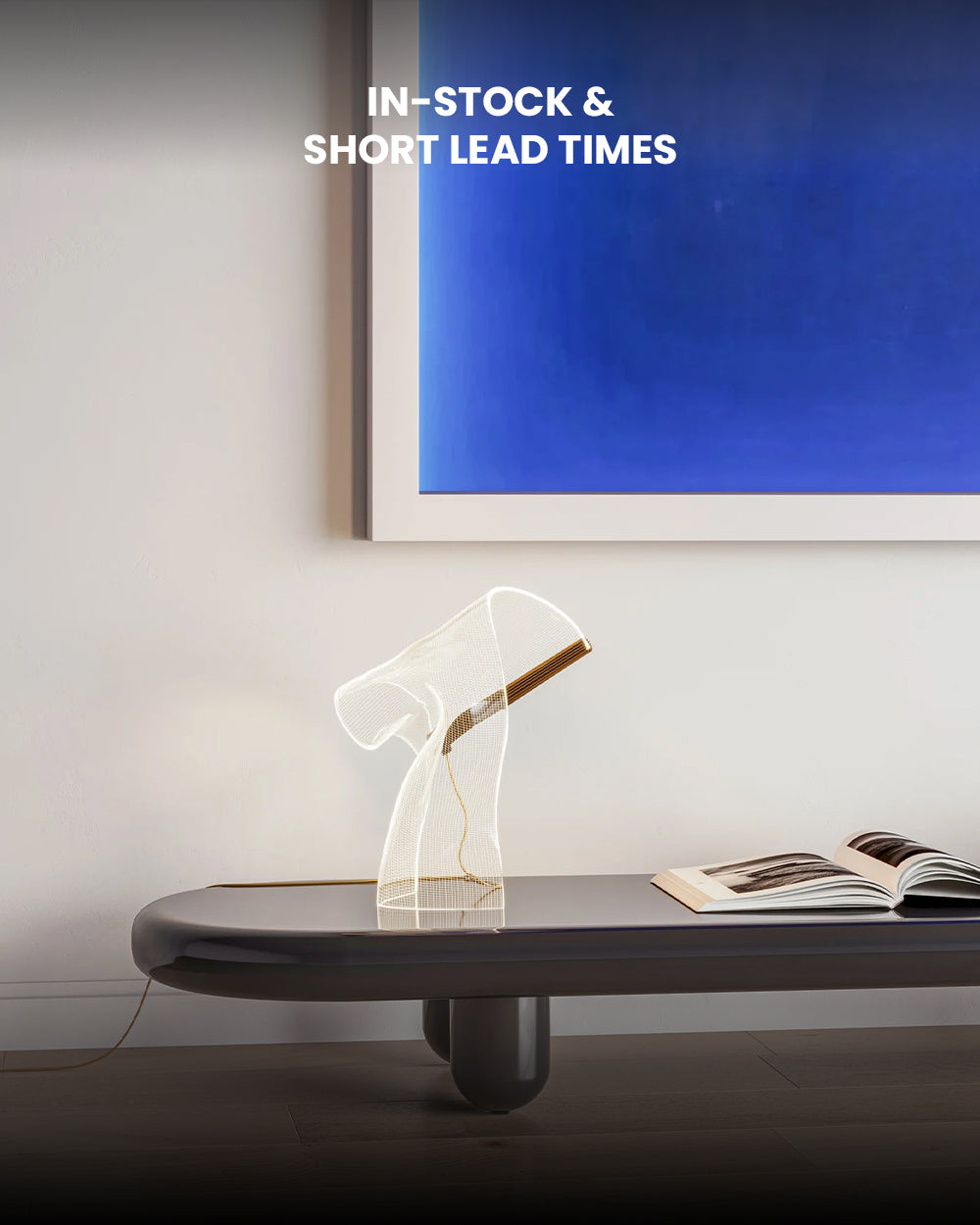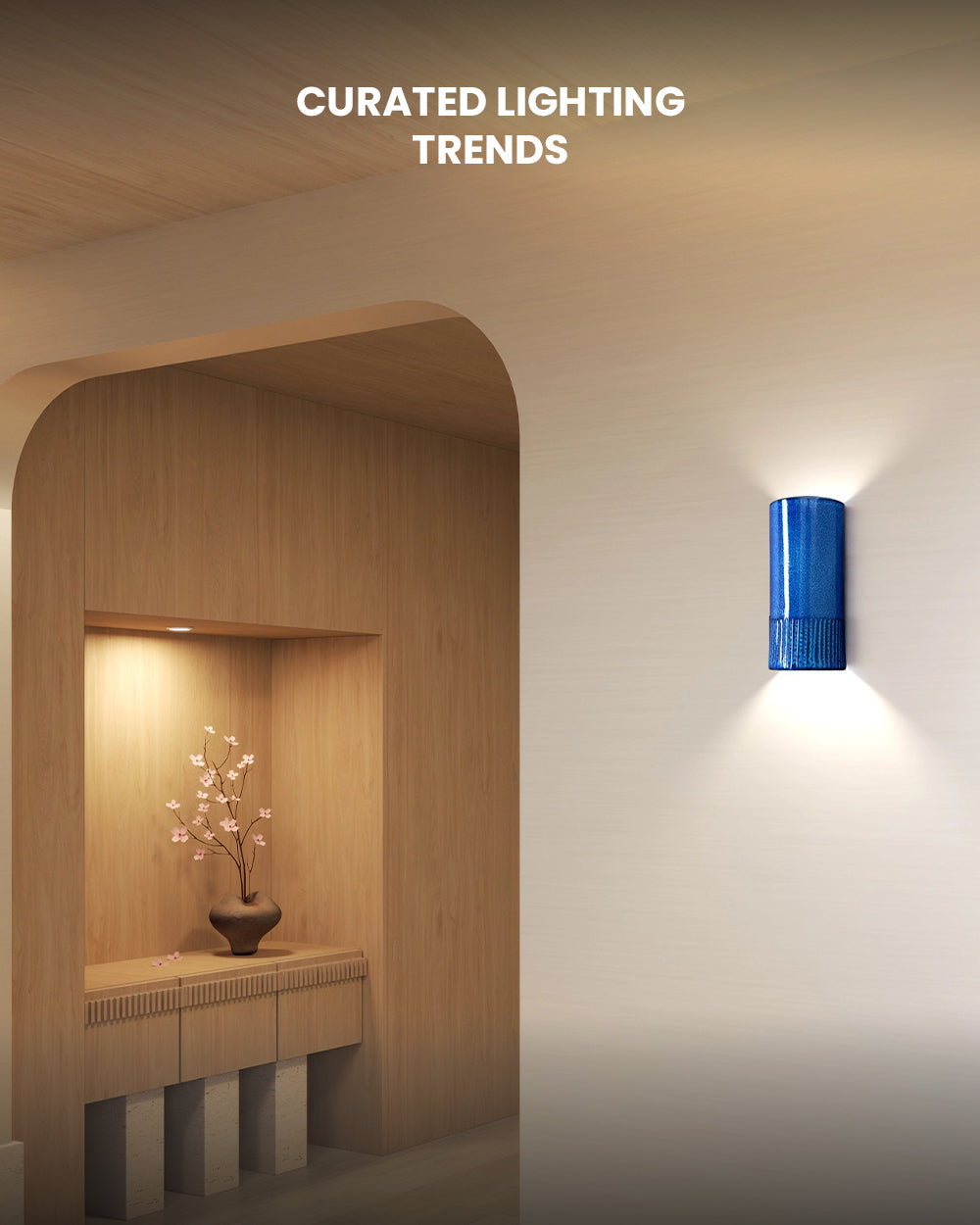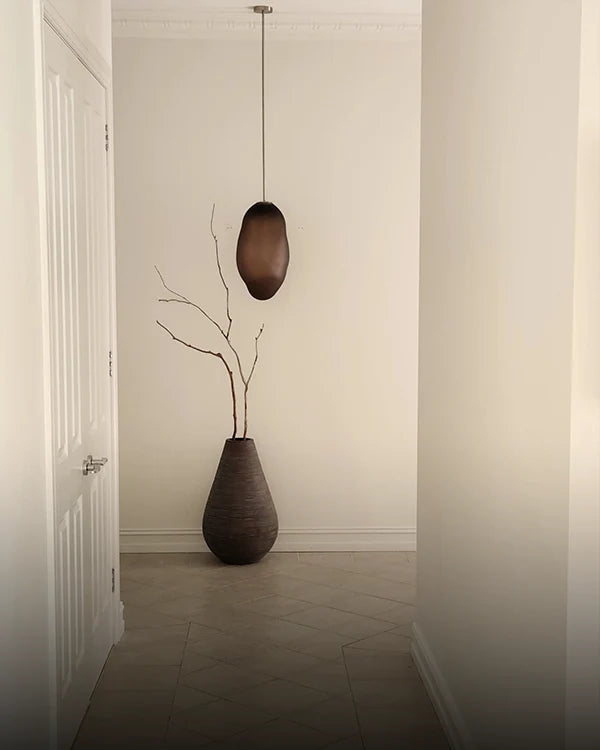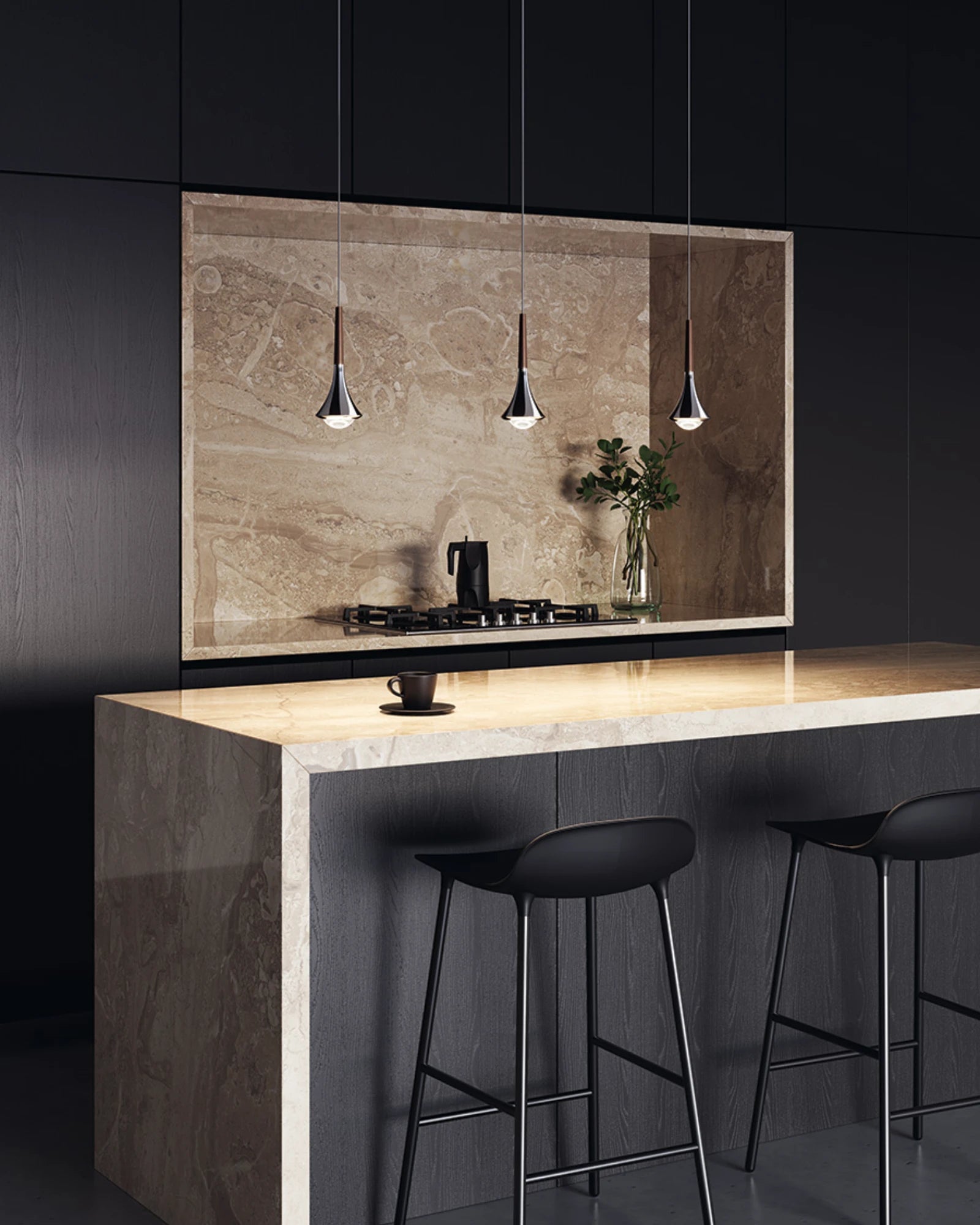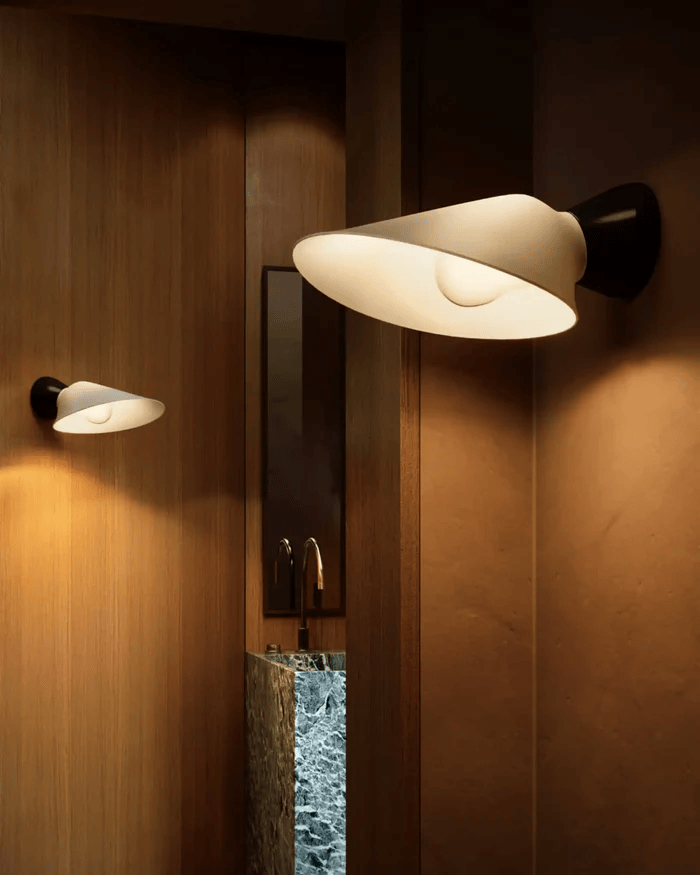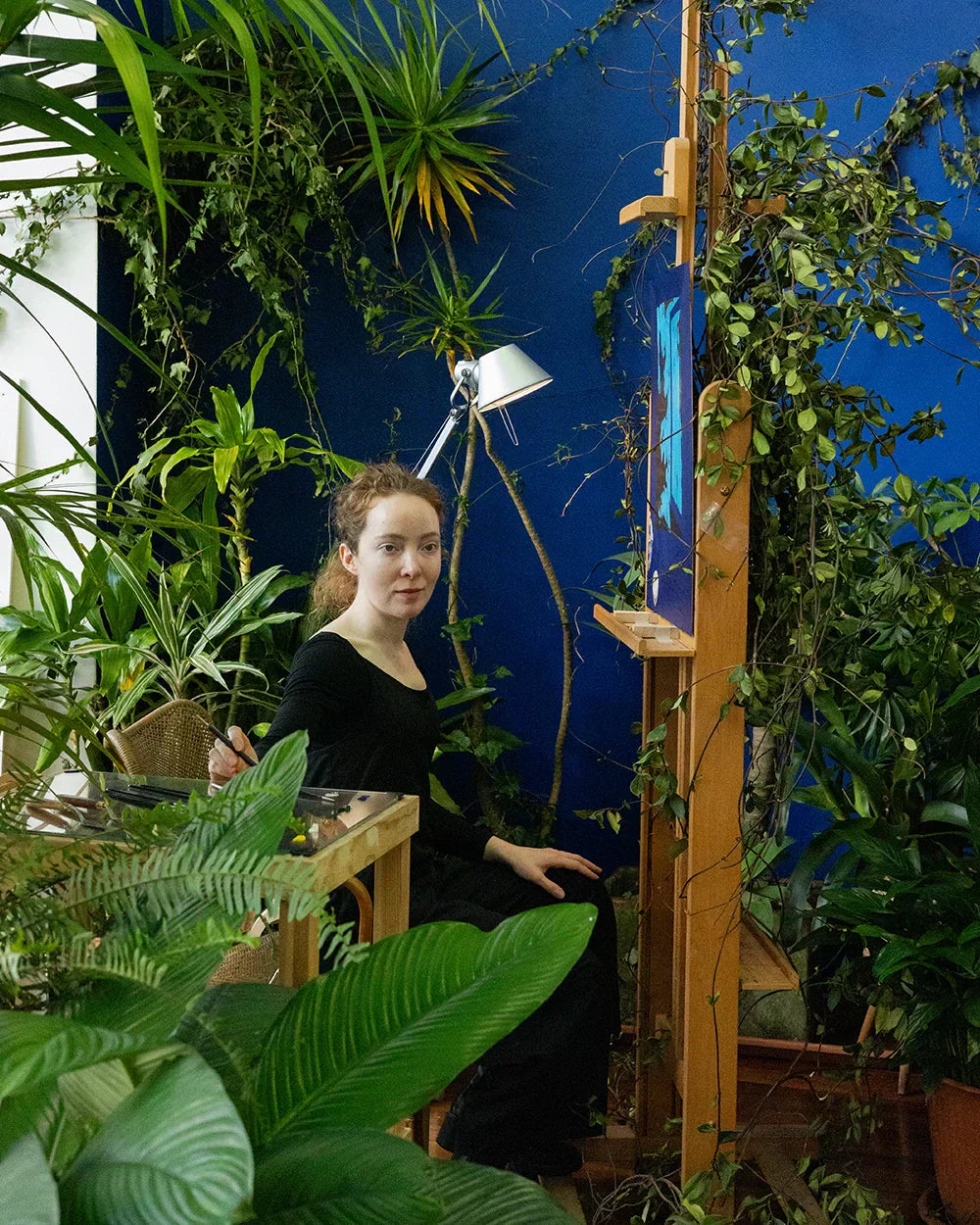Lighting is more than just illumination, it’s an essential design element that shapes the atmosphere, mood, and functionality of a space. Whether you’re refreshing a single room or creating a lighting plan for an entire home, the right choices can elevate a space from ordinary to extraordinary.
As legendary interior designer Albert Hadley said:
"Design is defined by light and shade, and appropriate lighting is enormously important."
In this guide, we’ll share our expert approach to choosing designer lighting from understanding lighting types and fixtures to styling each room in your home. You’ll also find insider tips on trends, sizing, sustainability, and avoiding common mistakes.
Types of lighting
First thing’s first, understanding the types of lighting is essential for creating a well-lit and functional space. Here are the three main types of artificial lighting that you should know about:
1. The Three Layers of Lighting Design
Ambient Lighting - Your Foundation Layer

Ambient lighting is the primary source of light in a room, and it creates a soft, even glow that illuminates the entire space. This type of lighting is typically achieved through overhead fixtures such as indoor pendant lights, indoor wall lights, ceiling-mounted fixtures, or recessed lighting. Ambient lighting is perfect for creating a warm and inviting atmosphere, making it ideal for living rooms, dining rooms, and bedrooms.
Read more about Ambient Lighting
Task Lighting - Focused & Functional

Task lighting is a type of lighting that is directed towards a specific area or task. It is usually brighter and more focused than ambient lighting and is often used for activities that require close-up work. Common examples of task lighting include desk lamps, reading lamps, and under-cabinet lighting in the kitchen. Task lighting is essential for areas where work is done, such as the kitchen, home office, and reading nooks.
Accent Lighting - Design with Drama

Accent lighting is a great way to add depth and interest to a room. It is used to highlight specific areas or objects in a room, such as artwork, sculptures, or architectural features. Accent lighting can be achieved through spotlights, wall sconces, or table lamps. It's important to use accent lighting sparingly, as too much of it can overwhelm a room. When considering the types of lighting to use in your home, it's important to consider the natural lighting in your space. Observe how the sunlight moves throughout the day and which areas of your room need additional lighting. By combining ambient, task, and accent lighting, you can create a well-lit and visually appealing space that is both functional and beautiful.
2. Lighting Fixture Types
There are a wide variety of lighting fixture types to choose from, ranging from simple and functional to intricate and decorative. The right lighting fixture can not only provide adequate light for a space but can also enhance the overall aesthetic and ambiance of a room. Some common types of lighting fixtures include chandeliers, pendants, flush mounts, sconces, floor lamps, and table lamps. Each type of fixture has its own unique style and function, making it important to carefully consider the lighting needs and design of a space when selecting the appropriate fixture.
Indoor Pendant Lights

Indoor Pendant lights are a versatile option that can be used in a variety of settings. It can be used as a focal point in a room or to provide task lighting in a workspace. When selecting pendant lighting, consider the size of the space, the height of the ceiling, and the style of your decor. A large pendant can make a bold statement in a room with high ceilings, while a smaller pendant can provide a more delicate touch.
View our vast range of indoor pendant lights
Indoor Wall Lights

Indoor Wall Lights are a great way to add designer lighting to a space without taking up floor or table space. They can be used to provide ambient lighting or to highlight artwork or architectural features. When selecting wall sconces, consider the style of your decor and the height of the sconce.
View our vast range of indoor wall lights
Indoor Table Lamps

Indoor table lamps are a great way to add designer lighting to a space without committing to a permanent fixture. They come in a variety of styles, from traditional to contemporary, and can be used to provide task lighting or ambient lighting. When selecting a table lamp, consider the size of the table and the height of the lamp.
View our vast range of indoor table lamps
Indoor Floor Lamps

Indoor Floor lamps are a versatile option just like indoor table lamps that can be used to provide ambient or task lighting. They come in a variety of styles, from arc lamps to tripod lamps, and can be used to fill empty spaces in a room. When selecting a floor lamp, consider the height of the lamp and the style of your decor.
View our vast range of indoor table lamps
Indoor Ceiling Lights

Indoor Ceiling light fixtures serve the primary purpose of providing ambient lighting, but their style and placement can also enhance a room's atmosphere. Careful selection and positioning of a ceiling light can create a romantic or relaxing mood. Room size, layout, and natural light should all be taken into account when choosing a ceiling light design.
View our range of indoor ceiling lights
Chandeliers

Chandeliers are the epitome of designer lighting, and they come in a range of styles to suit any space. From traditional crystal chandeliers to modern, abstract designs, chandeliers can provide both ambient and task lighting. Consider the size and style of your space when selecting a chandelier. A large, ornate chandelier may overwhelm a small dining room, while a minimalist chandelier may look out of place in a grand foyer.
View our range of indoor chandeliers
3. Lighting by Room
When it comes to lighting design in your home, there are three types of lighting to consider: ambient, task, and accent. While not every room will need all three types, most rooms will benefit from a mix of the three.
Living Room Lighting:

Layered lighting is essential here. Combine ceiling fixtures for general light, floor lamps for reading corners, and wall sconces for highlighting art or architectural features. A dimmer switch helps shift the mood from lively entertaining to relaxed evenings.
Kitchen Lighting:

Mix form and function. Pendant lights over an island provide both style and task lighting, while recessed or track lighting ensures even illumination. Under-cabinet LED strips make food prep safer and add a sleek, modern touch.
Dining Room Lighting:

The dining table is your stage. Hang a statement chandelier or a cluster of pendants directly above it, ideally centred and hung 75–90cm above the table surface. Accent the room with wall lights or buffet lamps for added depth.
Bedroom Lighting:

Focus on comfort and relaxation. Use a dimmable ceiling fixture for overall light, pair bedside tables with lamps or wall-mounted sconces for reading, and consider hidden LED strips under the bed for a soft glow.
Bathroom Lighting:

Function meets style here. Install an overhead ambient light and bright, even lighting at eye level for grooming such as IP-rated wall sconces on either side of the mirror. Consider dimmable accent lighting for spa-like evenings.
Office Lighting:

In a home office, task lighting is typically sufficient, especially if ample natural light is available. Darker offices may require more lighting to compensate for the lack of light reflected off walls and furniture.
Void Lighting:

Since voids are not typically used for specific tasks, the lighting must serve a purely aesthetic purpose, emphasising the architectural features of the void and creating a dramatic visual impact. Pendant lights, chandeliers, and cove lighting are popular options for void lighting, as they can highlight the height and volume of the space while creating a warm and inviting atmosphere.
Hallway Lighting:

Avoid dark corridors by placing lights every 4–6 feet. Wall sconces create an intimate, gallery-like feel, while flush-mount ceiling lights keep things simple and functional.
Why Choose Nook Collections
For over a decade, we’ve partnered with interior designers, architects, and discerning homeowners to deliver world-class lighting solutions. Our curated range is sourced from leading Australian and international designers, with a focus on craftsmanship, performance, and timeless appeal.
We offer:
- Personalised lighting consultations
- Expert technical advice
- Access to exclusive designer collections
- A Sydney showroom experience
Ready to transform your space?


